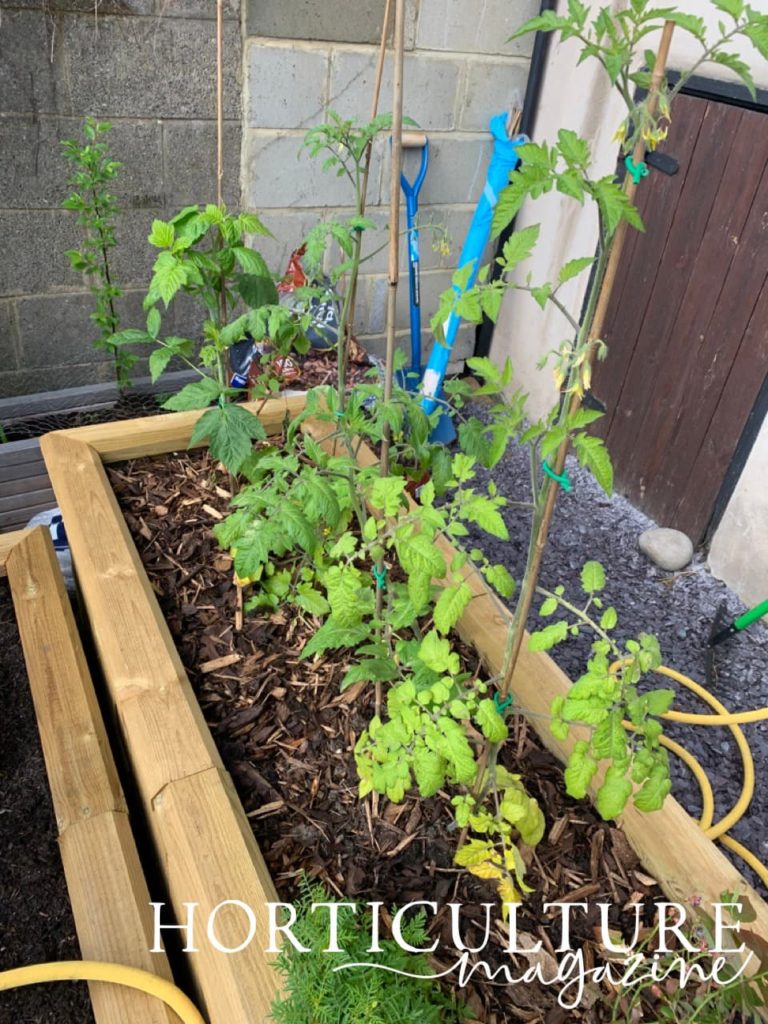Here’s How To Get Delicious Tomatoes From Seed In Just 7 Straight-Forward Steps


Elizabeth is a Permaculture Garden Designer, Sustainability Consultant and Professional Writer, working as an advocate for positive change. She graduated from the University of St. Andrews with an MA in English and Philosophy and obtained a Diploma in Applied Permaculture Design from the Permaculture Association.
Reviewed By DAN ORI

Dan has over 27 years’ under his belt caring for plants and gardens. Working as a Horticultural Instructor and Consultant, he draws on a diverse range of experience that includes working as a Head Gardener, Tree Surgeon, Garden Centre Trouble Shooter, and writer of academic papers. Dan has a Level 3 Diploma in Horticulture and is currently a candidate for the RHS’s most prestigious award – The Master of Horticulture.
Contributions From LORA AVEDIAN

Lora Avedian is a Textile Artist & Designer based in London, who uses flowers and other aspects of nature as a source of inspiration. She graduated from the Royal College of Art in 2017 and has since worked with the V&A, the Barbican Centre and The Royal Academy. In 2021, she published her first book about hand embroidery, titled ‘Stitch in Bloom’.
IN THIS GUIDE
TOMATO GUIDES
Disposal
Feeding
Growing From Seed
Growing In Hanging Baskets
Harvesting
Problems
– Not Setting Fruit
Pruning
Yellow / Orange Varieties
– Roma
– Sungold
– Alicante
– Moneymaker
– Gardeners Delight
Growing tomatoes from seed is not too difficult a challenge, though there are certain considerations to bear in mind.
“My favourite plant to grow from seed is probably tomatoes, as they are so easy to grow and so tasty,” shares Floral Artist Lora Avedian.
In this article, we will talk you through the process of growing tomatoes from seed – from choosing your tomato seeds, to planting your tomato plants into their final growing positions.
1) Choosing Tomato Seeds
First things first, if you want to grow tomatoes from seed, you will need to decide which tomatoes you would like to grow.

You will need to choose a variety or varieties, and you will need to source your seeds.
Remember, there are plenty of amazing heritage or heirloom tomato varieties to consider.
And if you choose a heritage variety, you will potentially be able to save the seeds from your own tomato plants to sow next year.

You can also sow the seeds from heritage tomato varieties that you have bought from a farm shop or farmers market.
To prepare the seeds from a tomato fruit to plant, you will need to place the seeds into a jar of water.
Mould will form on the seeds, which will remove the jelly-like coating from the seeds which stops them from germinating.
Once this mould forms, after a few days, remove the seeds from the jar and wash them thoroughly.
Then let them dry out and store them until you are ready to plant.

Think about whether you would like to grow determinate or indeterminate types, and consider the growth habits of different options.
Consider the length of time to harvest for particular varieties and the characteristics of their fruit and what they can be used for.
Consider also how you would like to use the tomatoes you grow before you make your choices.
2) Planning When To Sow

Typically, a rule of thumb dictates that tomatoes should be sown indoors approximately 6-8 weeks before the last frost date where you live.
Early sowing can be a good idea for short-season gardeners because when you sow early, you have the best chance of obtaining a good harvest of ripe tomatoes before the end of the year.
For most of the UK, this is some time in February – however, you can also get started in March or April.

If you are going to grow on your tomatoes in a polytunnel or greenhouse, you can get started even earlier, perhaps even in January in some areas, though February is generally best.
If planting outdoors, March sowing indoors is usually recommended to obtain good yields by the end of the season.
Tomatoes can be sown into seed trays, plugs, soil blocks or small pots…even toilet roll tubes.
Remember that you can use a range of reclaimed materials and do not need to buy plastic pots for seed sowing.
3) Germinating Your Seeds

To germinate successfully, tomato seeds need:
- The right temperatures (between 16-30°C).
- Sufficient moisture.
- Oxygen (an aerated growing medium).
Getting the best germination rates possible is important.
With tomatoes, germination rates can often be good, as long as the seeds are viable and the above environmental conditions have been met.
Choosing the right growing medium is important to balance water and oxygen needs.

Choose or make a suitable, light and moist yet free-draining seed starting potting mix for best results.
“I use sieved, peat-free, multipurpose compost when sowing tomato seeds as they germinate easily and are not inhibited by high amounts of nitrogen in multipurpose, so there’s no need for special seed composts that have lower nitrogen levels,” explains Master Horticulturist Dan Ori.
With earlier indoors sowing, meeting the needs of your plants can be more of a challenge.
The main challenges are providing the right temperatures for successful germination, and the low light levels early in the year.
You may wish to use a heated propagator if you find it a challenge to provide the right temperatures in your home.

If you do not have a propagator, using a seed tray with a plastic tray or pots with plastic bags placed over the top can help.
Place your seed trays or pots in as bright and light a place as possible – a south-facing windowsill is ideal.
4) Caring For Young Seedlings

Young tomato seedlings should be kept moist, and at around 18°C.
If you are starting early, LED grow lights can help you make sure that once seedlings emerge, they do not become weak and leggy due to a lack of light.
Turning your pots or trays regularly, and perhaps using foil or mirrors to reflect light back onto your seedlings, can help to prevent them from leaning over towards the light.
5) Potting Up
Once your tomato seedlings have developed two true leaves, these should be pricked out and potted up into pots that are at least 9cm across.
When potting up, bury each seedling a little deeper than it was in its previous setting.
This means that a length of the stem that was above the growing medium will now be beneath it.

New roots should emerge from this newly buried length of stem, so the plant will develop a stronger and healthier root system which will get it off to a good start.
Avoid any moisture or temperature shocks that could check the growth of your young plants.
If roots begin to emerge from the base of the pots, and it is not yet time to plant the tomatoes into their final growing position, consider potting them up again into larger containers, since plants may flower prematurely or experience checks to their growth if they are too confined.
6) Hardening Off Seedlings

Around 2-3 weeks before it is time to plant your tomatoes into their final growing positions, (typically in around April or May) you need to harden them off.
Hardening off tomato seedlings means gradually acclimatising them to outdoor growing conditions.
If you have a greenhouse, place the tomato plants into this ‘halfway house’ for a couple of weeks, then move them into a cold frame, which can be gradually opened up more over the next week or so.
If you do not have a greenhouse, move the plants into a cold frame or a sheltered spot for short periods of time, gradually increasing the length of time and amount of outdoors exposure.
7) Planting Out

It is important not to plant out your tomato plants too early.
Of course, you can plant out tomatoes earlier in a polytunnel or greenhouse than you can outdoors, but it is important to make sure that your young tomato plants are not exposed to frost or chilly conditions.
This can cause a check in their growth, or even cause frost damage or kill your plants in extreme cases.
Be sure to check the weather conditions and remember that garden timings can vary significantly from year to year.

You can grow tomatoes in a range of settings – outdoors, in a typical vegetable plot or raised beds, in a greenhouse or polytunnel bed, or in a huge variety of containers or grow bags.
When positioning your plants, be sure to think about the type or types of tomato you are growing, the conditions they require, and whether they need any support.

It is best to get your supports in place (if required) before planting.
When planting out your tomatoes, as with potting up, bury the plants a little deeper in the soil or growing medium to encourage strong root system formation.
